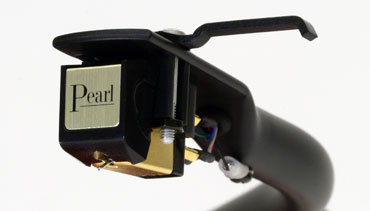Review: Pro-Ject RM-1.3 turntable Page 3

PERFORMANCE
I was almost immediately happy to have the RM-1.3 in my stereo system. When I dropped the needle on trumpeter Lee Morgan's Caramba, something just sounded right. Smooth mids and silky highs sang out through my speakers, while the solid groove of bassist Reggie Workman and drummer Billy Higgins sounded more funky and in-the-pocket than I remembered. Morgan's tone had the same combination of golden warmth and cutting punch that I remembered, but somehow his horn seemed more real, more embodied between my speakers.
Having upgraded my Pro-Ject One a while back with a fresh Ortofon OM 5E, and therefore making it essentially the same as the Debut III, I decided to do a shoot-out between my old turntable and the RM-1.3 to find out if the latter would be a worthwhile upgrade for owners of less-expensive Pro-Jects. Although this test didn't directly compare the two turntables - that would require using the same cartridge on both - it did compare the complete packages now being sold, i.e., the Ortofon OM 5E/Debut III (or its equivalent) and the Sumiko Pearl/RM-1.3. (I also later moved the OM 5E onto the RM-1.3 to try to find out which differences were due to the cartridges and which were due to the turntables.)
The big difference was in the bass, which through the RM-1.3 sounded more accurate in every way: tighter when it should be yet fuller when the tune demanded it. This improvement held up when I changed cartridges, so it seems the 'table should get the credit. When I played my three-decades-young copy of Ornette Coleman's Dancing In Your Head on the Pro-Ject One, bassist Jamaaladeen Tacuma sounded less like the trebly, fleet-fingered showboater I idolized and more like Memphis groovemaster Duck Dunn. On the RM-1.3, Tacuma's lines tightened up considerably. The same happened when I spun "Windows" from Utopia's Oops Wrong Planet - bassist Kasim Sulton's melodic lines sang through the RM-1.3, but plodded through the Pro-Ject One.
The other major difference was in the stereo imaging, which seemed to be due to the cartridges. The RM-1.3/Pearl spread out the performers smoothly between my speakers, whereas the Pro-Ject One/OM 5E gave me increased apparent channel separation and more of a distinct left/right sound.
There were some recordings on which I liked the Pro-Ject One/OM 5E stereo presentation better - especially John Coltrane and Don Cherry's The Avant Garde, which was recorded with an old-school "sax in the left channel, trumpet in the right" stereo mix. But with most recordings, I preferred the RM-1.3/Pearl presentation. The backing vocals in Utopia's "Windows" sounded lush, if less enveloping, through the RM-1.3/Pearl, while through the Pro-Ject One/OM 5E they sounded exaggerated in ambience and a bit phasey. When I mounted the OM 5E on the RM-1.3, the more distinct left/right sound seemed to come over with it.
The RM-1.3/Pearl combo also delivered a more satisfying lower midrange. When I played "One Plus Two Blues" from Splendid, an album of acoustic guitar duets by Phillip Catherine and Larry Coryell, the middle-to-low notes sounded fuller, better defined, and more natural, with more resonance of the guitar bodies coming through. Some of this seemed to be due to differences between the two turntables, and some of it seemed to be due to the cartridges. Again, Splendid revealed the difference in stereo presentation: The RM-1.3/Pearl offered more soundstage detail, while the Pro-Ject One/OM 5E combo gave me more of a hard left/right sound.
Out of curiosity, I tried listening for motor rumble on both turntables by letting a record run out then turning up the volume. Although I heard some low-frequency hum from both, I couldn't readily distinguish one as being quieter than the other. However, when I connected a computer running TrueRTA, I noted that the Pro-Ject One's spectrum included a spike about +10 dB above the noise floor at 300 Hz, which happens to be about half the motor speed. No such anomaly showed up with the RM-1.3, so maybe its fully separate motor delivers a measurable advantage even if it's one I couldn't necessarily hear.
BOTTOM LINE
I'm more excited about the RM-1.3 than I have been about anything I've added to my system in a long time. Not only is it making my old jazz sides sound considerably better, it's a sheer joy to operate. The tonearm feels balanced and substantial, the turntable's operation is smooth and quiet, and the whole rig just feels solid, well built, and thoughtfully designed. Perhaps most important, I now feel like I own a real turntable instead of just a record player.





























































